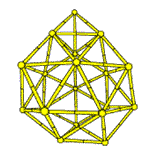Department of Chemistry
Document Type
Article
Date of this Version
March 2004
Abstract
As the size of microelectronic devices continues to shrink and the desire to build in hierarchical structures of organic and biological materials grows, control of the chemistry and structure of materials at the molecular level will become increasingly important. Conventional lithographic techniques to pattern polymeric thin films are beginning to reach their resolution limit and several alternative "bottom-up" strategies have emerged that use the scanning probe microscope to manipulate matter at the atomic or molecular scale. Of these new scanning probe nanolithography (SPN) techniques, dip-pen nanolithography (DPN) [I] and scanning probe nanografting (SNG) [2] are particularly promising.
The DPN methodology utilizes the tip of an atomic force microscope (AFM) as a "nanopen" to transport an "ink containing organic molecules onto a solid support as illustrated in Figure 8. l. Using the same tip to "write" and subsequently "read patterns, it is possible to create nanoscale patterns of alkyl thiols with remarkable resolution (~10 nm) and simultaneously control the chemical functionality of the written areas. Examples of patterns created using a variety of inks are shown in Figure 8.2.



Comments
Published in Nanoscale Structure and Assembly at Solid-Fluid Interfaces: Volume II, Assembly in Hybrid and Biological Systems, edited by Xiang Yan Liu and James J. De Yoreo. Boston/Dordrecht/ New York/London: Kluwer Academic Publishers, 2004.